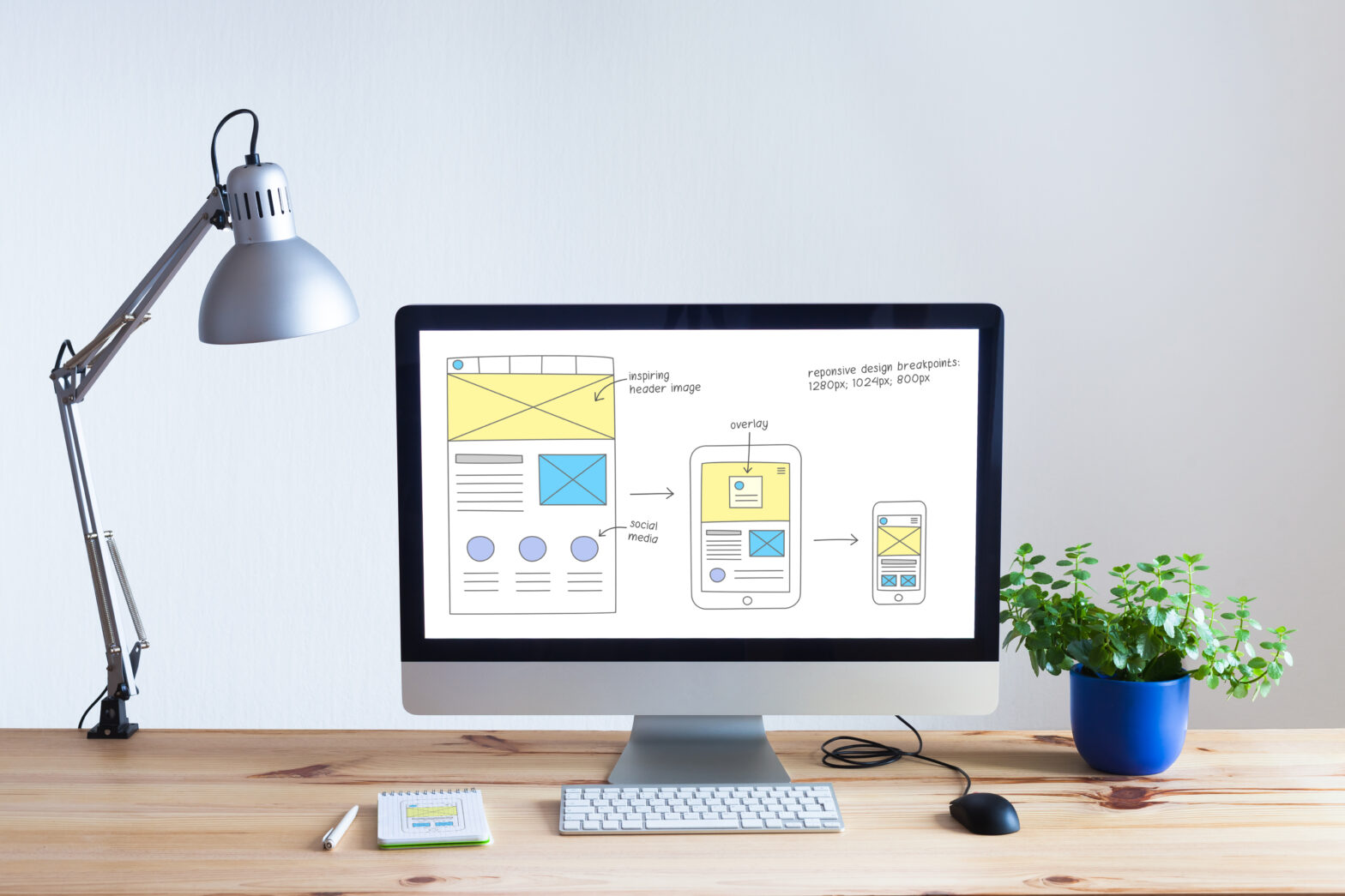Some entrepreneurs feel excited about launching their business website while others dread it.
This guide answers the top questions you may be asking when it comes to building a website for your business and some things that you might not have even considered yet.
1. Do I need to hire a website designer, or can I use a website building package?
There is value in hiring a skilled designer as they can save you a lot of time – vital when you’re busy running a business and are keen to launch your website.
Be aware that building your site can be broken down into two parts: designing and developing. Graphic designers create images for websites, ads, icons, logos and prints. Some only create graphics but others can design websites too.
Make sure you check this when you contact them.
With the all-rounders, try and get a sense of where their weaknesses are and whether that clashes with something important on your site. For example, if the reviews of someone that you’re looking at say they’re weaker on design and you want a visually attractive website, try someone else.
Next, you’ll need a developer to make the website function by coding the designs.
Whoever you’re hiring for your design and development needs, it helps to know exactly what you want from your website before you choose anyone. It’ll save you money in the long run to have a website that you really want. Try and sketch a mock-up site if you can, establish your design likes and dislikes, which features you really want to see and what kind of time frame you have for completion.
Those going for the DIY option will be glad to hear that there are plenty of website builders out there. Many of these are code-free, drag and drop sites which make it easy for people without specialist training to create their own website. Some hosted e-commerce systems do this, but we’ll come on to that later.
2. Does my website need to be different for smartphones?
In a word, yes. You don’t need to create a whole different website for mobile, but you need to make sure your website is mobile optimised. This means a different, more user-friendly version of your site will be displayed on different size devices.
Mobile use is the norm. In 2018, 52.2pc of all the world’s web traffic was through mobile, according to Statista.
What’s more, mobile users interact with websites differently, idly browsing when they have a spare moment. They’re more likely to make smaller purchases, leaving larger purchases for desktop. Often, they’ll combine the two when completing a sale, so it’s best that your website is equipped to handle both.

It’s important to optimise your mobile landing pages as they can’t include the fully-fledged features of desktop. If they’re not mobile-friendly, pages that are key for your traffic may load slowly and push people away from your site.
Optimised pages will also get more clicks coming through from social media as 91pc of mobile phone browsing is on social platforms. An unresponsive site can affect your sales as people are less likely to click through the whole checkout process, thus affecting your conversions.
3. How do I incorporate selling through my website?
You’d do that with an e-commerce site. Either go through a third-party like Shopify or hire someone to do it for you.
If you’re making your own, choose your e-commerce platform and pick a domain name for your store. Next, set up a merchant account like PayPal. They will charge a fee for processing payments, but it ensures that you’ll get paid.
Getting an SSL certificate fixes the green lock next to your URL which signifies security and encrypts sensitive information to keep it safe.
As standard, your site should have a home page, “about” page, customer service and contact us pages. You may also want to consider hosting a blog on your website if you want to create and promote content to reach customers. This can always be added at a later stage if you would prefer to delve into the world of blogging once your website is up and running.
4. How do I set up a business email address?
It’s preferable to have an email linked to your business name. There are many benefits to having your business name within an email address, professionalism and trust being just a couple.
When you go through a domain registrar, your business email address will be based on the domain name that you’ve purchased. You might even have a few variations to choose from.
Otherwise, you’ll have to create one on a separate platform. More established email providers will have extra charges and packages for a professional email address. Some will let you see how the email address looks on-screen as you set it up too. It’s an ideal time to see how it reads – ask others to have a look and see what they think.
If your desired name is already taken, turn to email address generators. Type the name in the box and the provider will suggest a list of alternatives – aim for ones which don’t have numbers on the end — annajordan19 is not a good one.
Set up multiple inboxes for your employees. Everyone in your business can be given a business email – they’ll have the same domain with their own name or the department as a prefix.
5. Do I need to have a blog on my website?
Hosting a blog has myriad benefits. It adds a more conversational, human element to your business. A blog is the perfect way to do that – establish your unique writing style, add personal facts and quirks and really make it your own. It’s an easy way to bring your staff’s faces and personalities to the brand.
As well as the casual side, you’ve got the opportunity to build yourself up as an authority. Flex your expertise – give your audience info which is useful to them and comment on current happenings in your industry.

Interesting content is key as it encourages readers (and potential customers) to return to your site, helping to build a loyal audience. Having an open comments section gets conversation going which could give you inspiration for future posts.
In any case, the blog will need to be updated regularly – Google will pick up on this as it will have more content to index, boosting your visibility. Updating regularly also shows that your business is alive and well.
Due to their topical and informational nature, blog posts are very shareable. Encourage readers to like, share, retweet and use hashtags to help it gather momentum. It’s also free marketing.
6. How can I get my website to perform better?
First off, download and track Google Analytics so that you know your numbers. This will help you identify who is visiting your site, when you’re busiest and where users found your site. You’ll also see which articles get the most traction – an essential indicator of what’s popular with readers.
It could be the blog, the FAQ or another section on your site – you should be optimising keywords in headings for long-term SEO value too.
A Google My Business Page will help you gain prominence in search results – especially local searches – making it easier for customers to find you. Ask suppliers and customers for links from their website as well as reviews to boost your credibility.
Finally, write posts that are helpful and include strategically placed calls to action which are appropriate to the page and content that it’s based around.
The most important thing to remember is that a website is never finished, so keep working at it!
Learn how to achieve more online with free and trusted advice from the UK Domain. Browse articles, guides and more here.





